Guadeloupe Island: Where To Stay – An Island Guide
February 4, 2023
It’s been a week since I returned from my Guadeloupe trip. My trip to Guadeloupe was a peaceful delight. The beautiful island of Guadeloupe is one of the most relaxing islands I’ve ever traveled to. I look forward to returning and hopefully helping you decide where to stay on your next trip to Guadeloupe.
Disclosure: This post may contain affiliate links, which means we may receive a small commission if you click a link and purchase something. Clicking these links won’t cost you anything, but it will help us to keep this site up and running! Learn more about our affiliate policy.
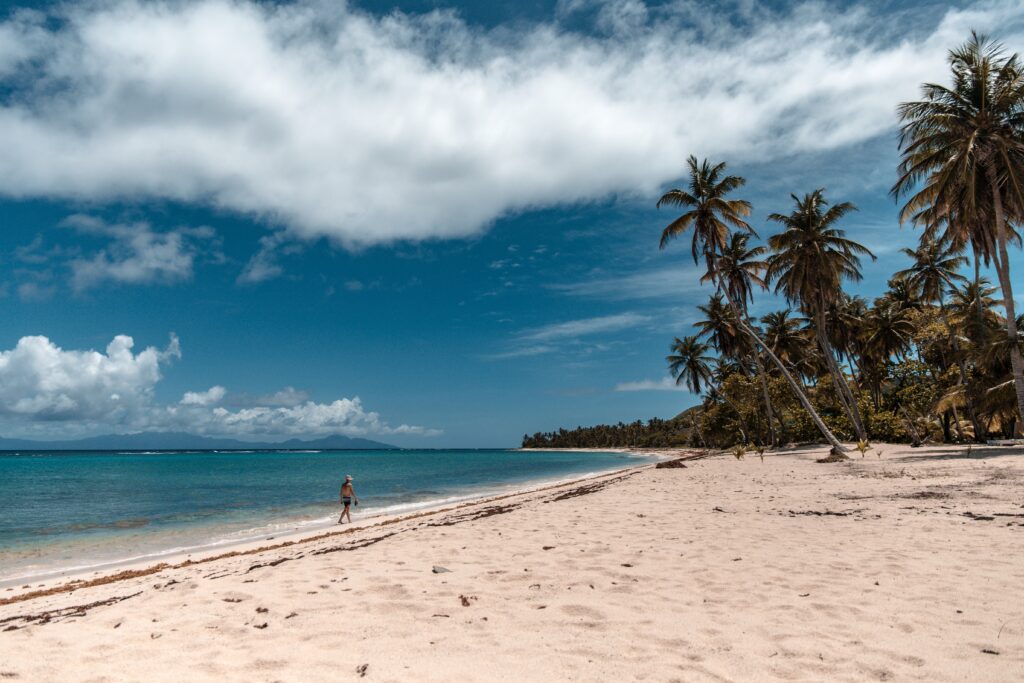
What We’ll Cover:
Where To Stay – A Comprehensive Island Guide
Guadeloupe is a volcanic island in the Pacific Ocean, about 241 kilometers (130 nautical miles) off the western coast of Mexico’s Baja California Peninsula and about 400 kilometers (200 nautical miles) southwest of the city of Ensenada in the state of Baja California. Compared to the surrounding islands, Guadeloupe is fairly large.
Before making reservations at hotels in Guadeloupe, my pro tip is to give a lot of thought to the neighborhood in which the hotel is located. There are more than 12 islands in the archipelago, and in my opinion, they are some of the nicest islands in the Caribbean; nevertheless, there is a good probability that you will not have sufficient time to get to all of them even if you try.
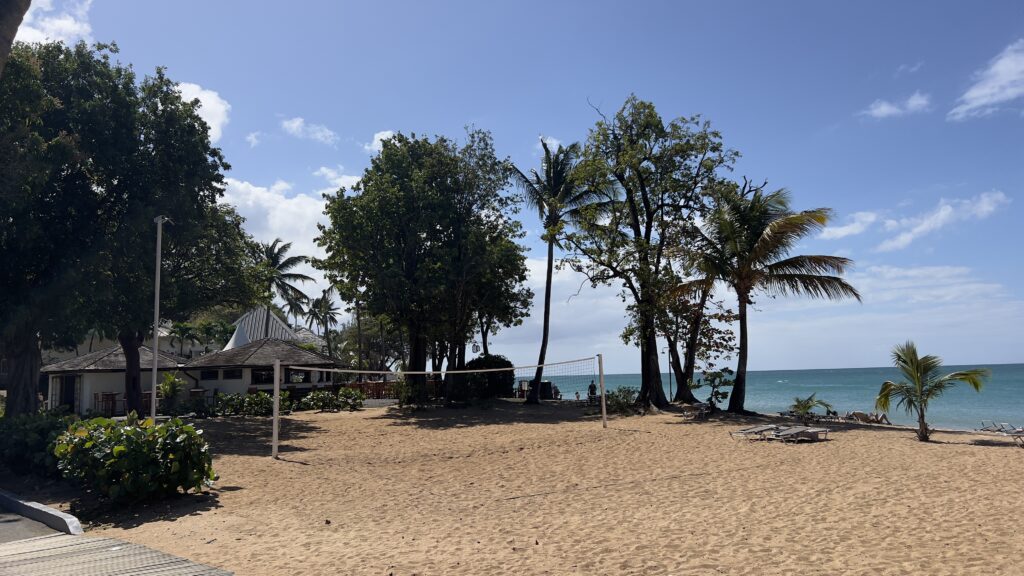
Neighborhoods to Stay in Guadeloupe
The two largest islands are Basse-Terre and Grande-Terre. They are split from one another by a narrow passage of water, and if you don’t look at the map very carefully, you can get the impression that these two islands are one. Basse-Terre and Grande-Terre are the most popular places to stay in Guadeloupe, with the other islands typically being visited for day trips rather than overnight stays.
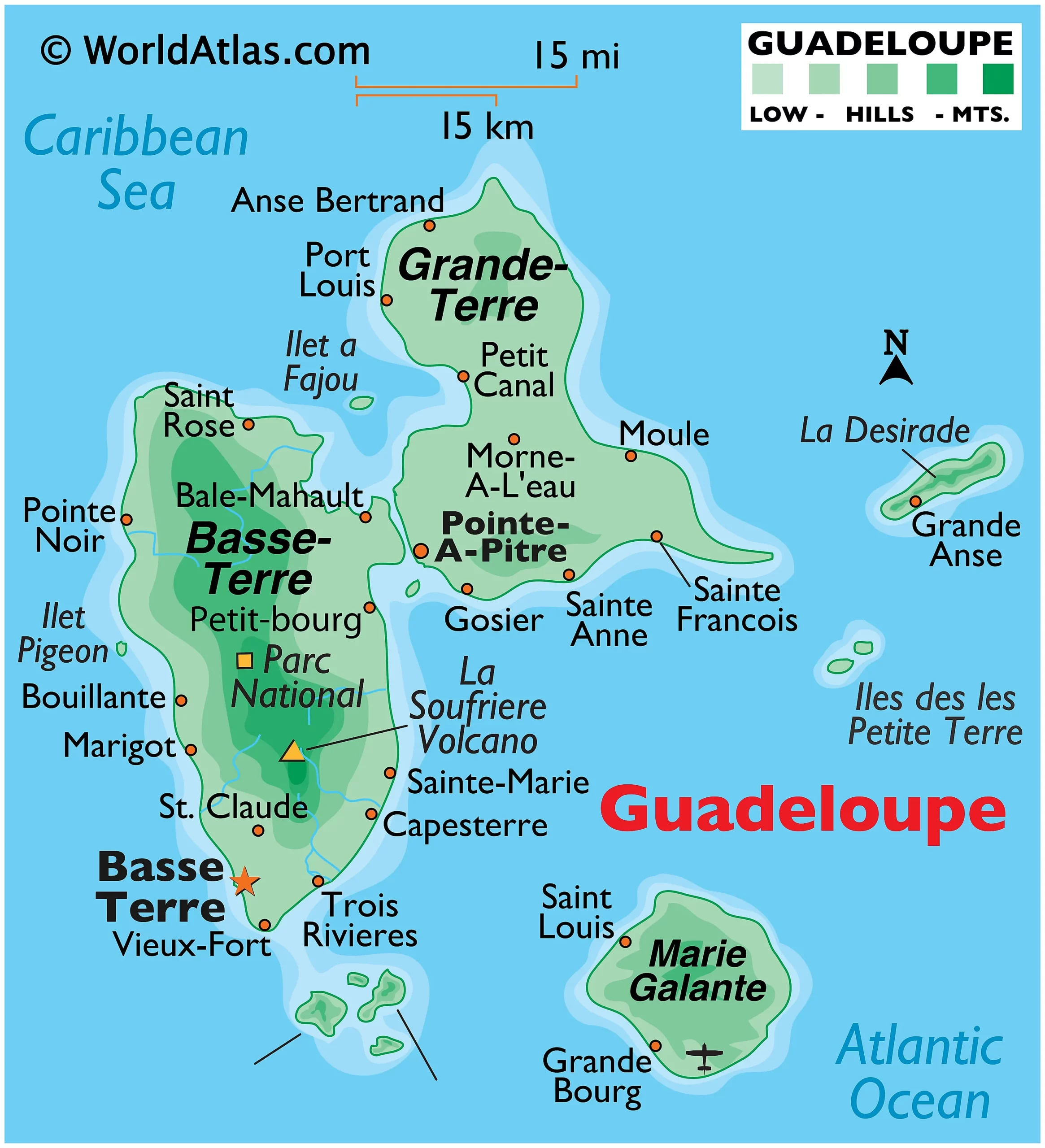
Due to the notoriously heavy traffic on the bridge that connects Basse-Terre and Grande-Terre, traveling from one side of Basse-Terre to the other side of Grande-Terre can be quite an ordeal. Because of this, I strongly suggest that you split your trip into two halves and explore both islands during each segment. You are not required to do this, but if you want to see all of the beautiful things that Guadeloupe has to offer and don’t want to spend your entire holiday sitting in the car, it’s a good idea.
If this is your first time in Guadeloupe, I suggest staying in the Le Gosier district. It has a lot to offer visitors. It is a significant town in the western portion of Grande-Terre. This location is perfect for those who will only be in Guadeloupe for a short period but want to take in as much as possible while there. In addition, it is teeming with restaurants and bars, and its nightlife is among the greatest in all of Guadeloupe.
Saint-François
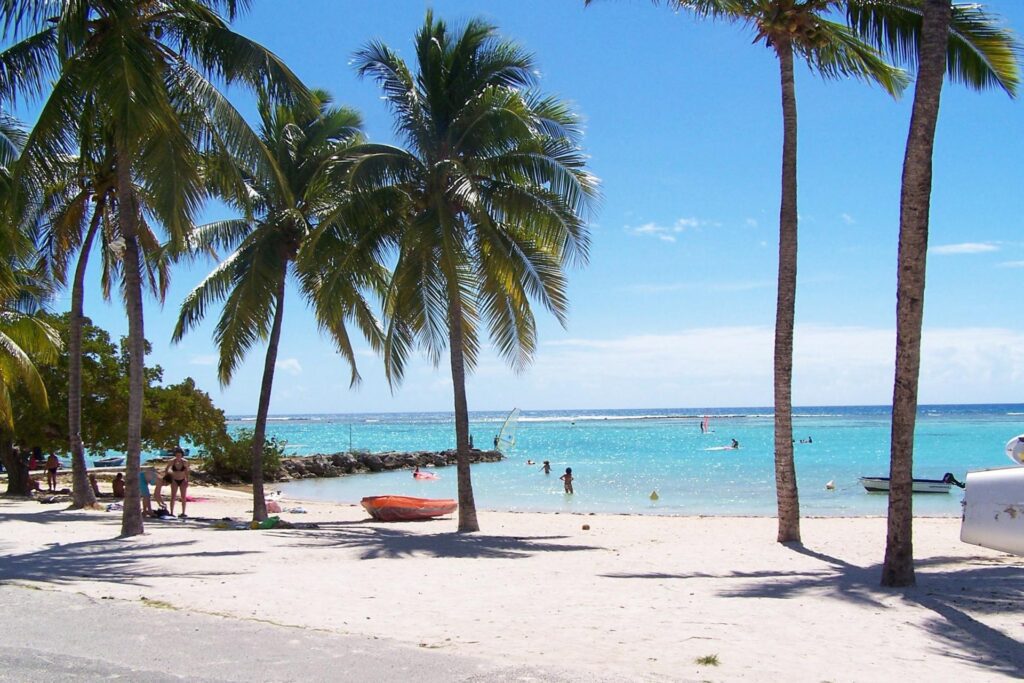
Many people choose to vacation in Saint-Francois on the island of Grand-Terre because it is home to the renowned “Pointe des Chateaux” coastline, numerous art galleries, and several of Guadeloupe’s most popular beaches. A lively marina is dotted with shops and eateries, numerous craft stores, and a vibrant market where you may try regional delicacies and fruits. Saint-François is the ideal destination if you appreciate sports because it offers kayaking, windsurfing, kitesurfing, fishing, sailing, and cycling. Additionally, it features a global “18-hole” golf course. Here are some hotels in Saint-François, if you pick it as your choice:
Bwa Chik Hotel & Golf: The Bwa Chik Hotel & Golf has a golf course and an outdoor swimming pool next to Champagne Bay Marina. It provides roomy lodging with balconies and pool or golf course views. At the Bwa Chik Hotel & Golf, every sizable room and suite features a modern, minimalist design. There is air conditioning and a TV. The living area in a suite has a sofa bed and a kitchenette. The Bwa Chik’s poolside patio serves a continental breakfast to guests. Saint-François and the waterfront both have eateries, taverns, and cafés.
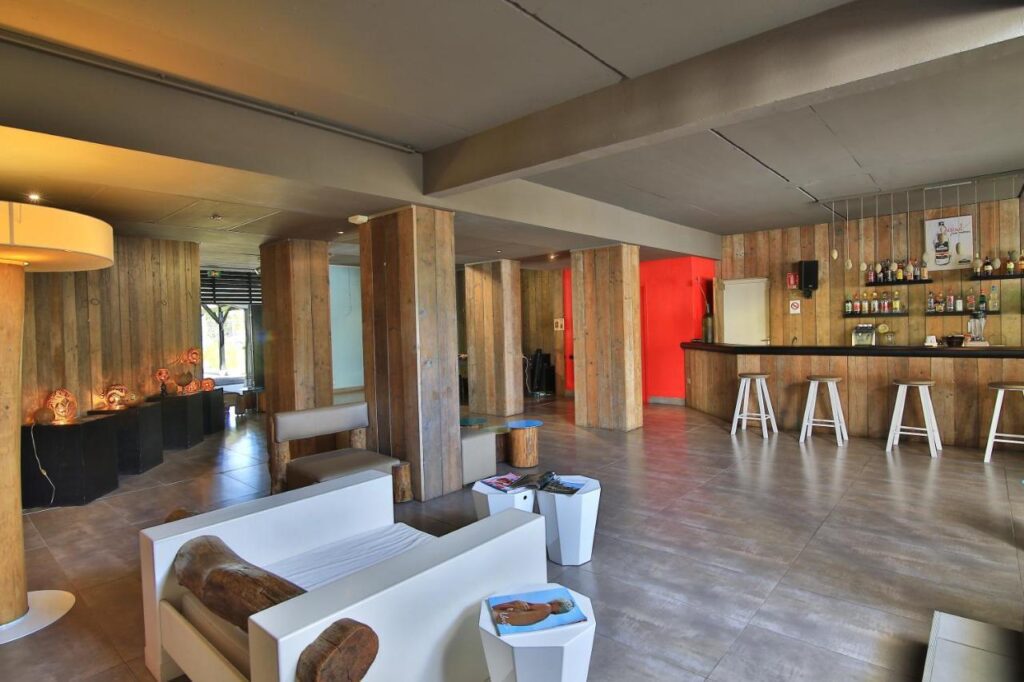
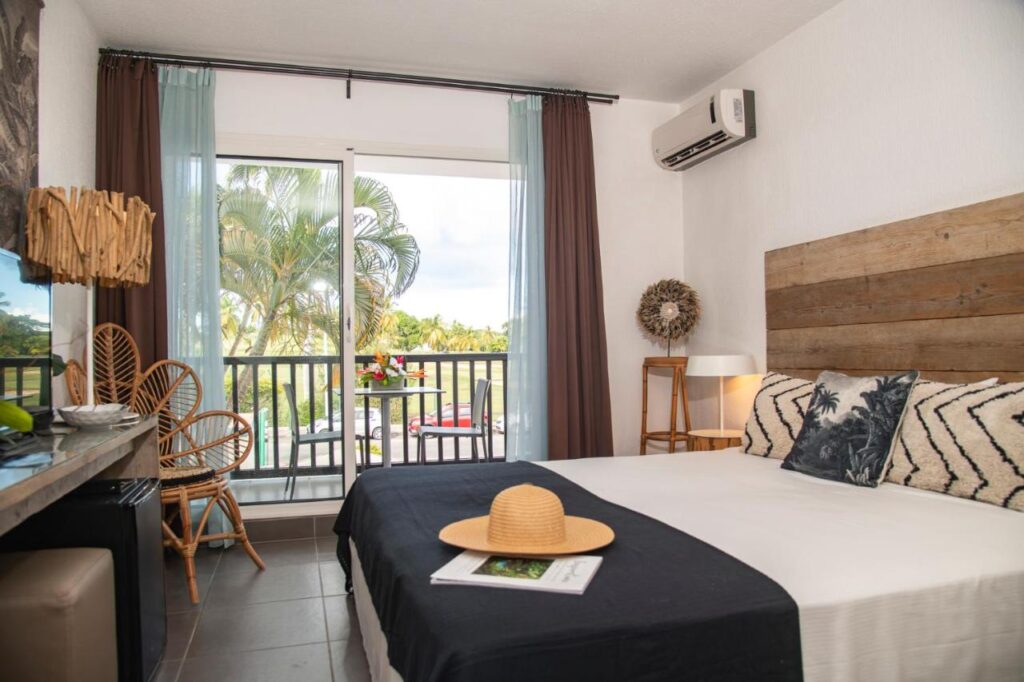
Hôtel & Villa Le Cocotel: Hôtel & Villa Le Cocotel has a garden, terrace, outdoor pool, and free parking in Saint-François, 2.1 kilometers from Mancellinier Beach. The 4-star hotel has air-conditioned rooms with free WiFi, private bathrooms, and a bar. The non-smoking property is 2.3 kilometers from Plage de la Pointe des Pieds. Hotel rooms have flat-screen cable TVs. Some rooms have a fridge, oven, and dishwasher. The hotel serves continental breakfast. Four-star Hôtel & Villa Le Cocotel has a hot tub.
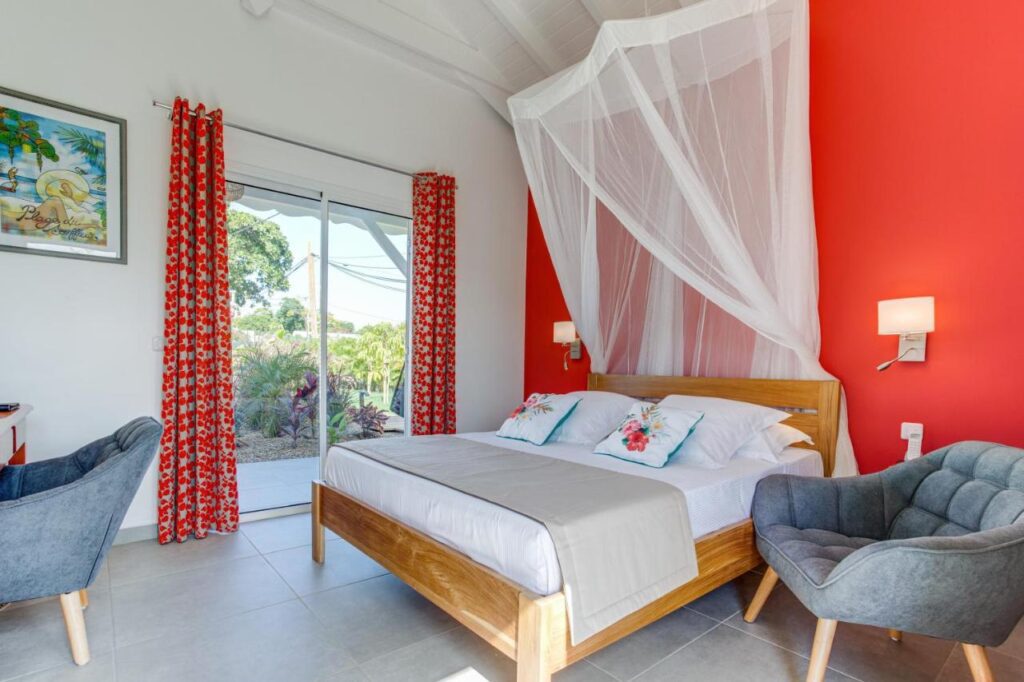
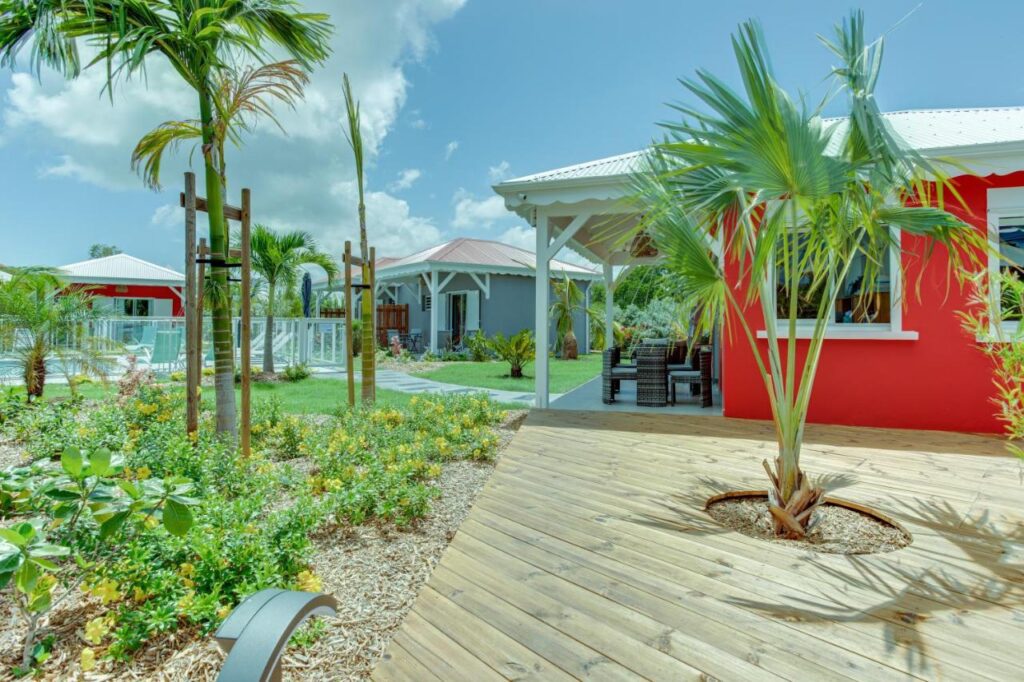
Le Gosier
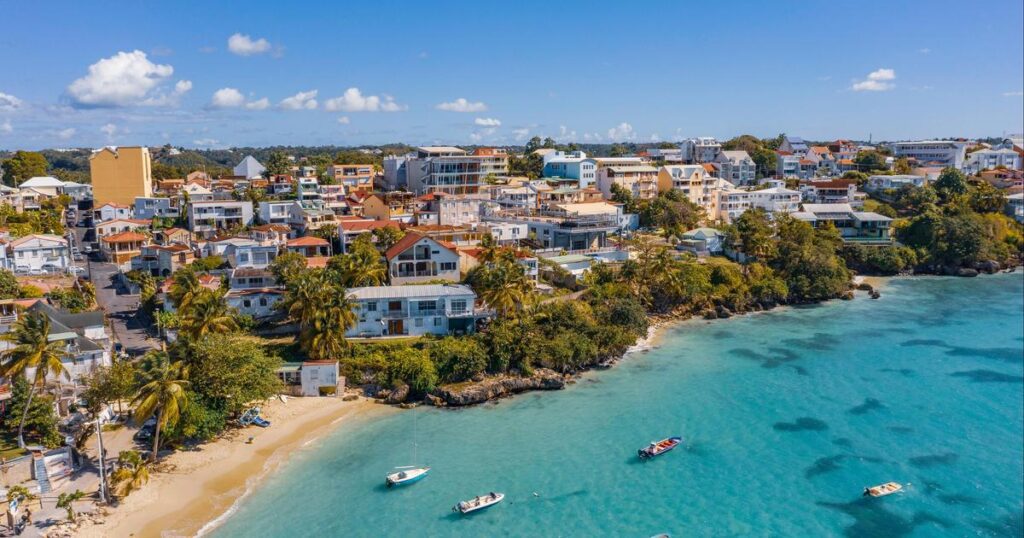
Le Gosier is 15 minutes from the airport and ferry port in Grande-Terre. This seaside resort, known for its scenic islet and marine life aquarium, is popular with all ages. It’s a wonderful location for seeing the island’s major galleries and historical museums, ferry to Marie-Galante and the Saints, and exploring Guadeloupe. Below are some of the hotels in Le Gosier.
Canella Beach Hotel: Canella Beach Hotel on Grande Bay offers sea, garden, or pool views, an outdoor pool, and a restaurant. It’s only 2 km from Le Gosier’s center. Canella Beach Hotel’s air-conditioned studios and apartments are modest. A balcony and flat-screen TV sitting are available. The kitchenette has a fridge and free Wi-Fi. Canella Beach serves breakfast. Le Gosier’s center has cafes and pubs.
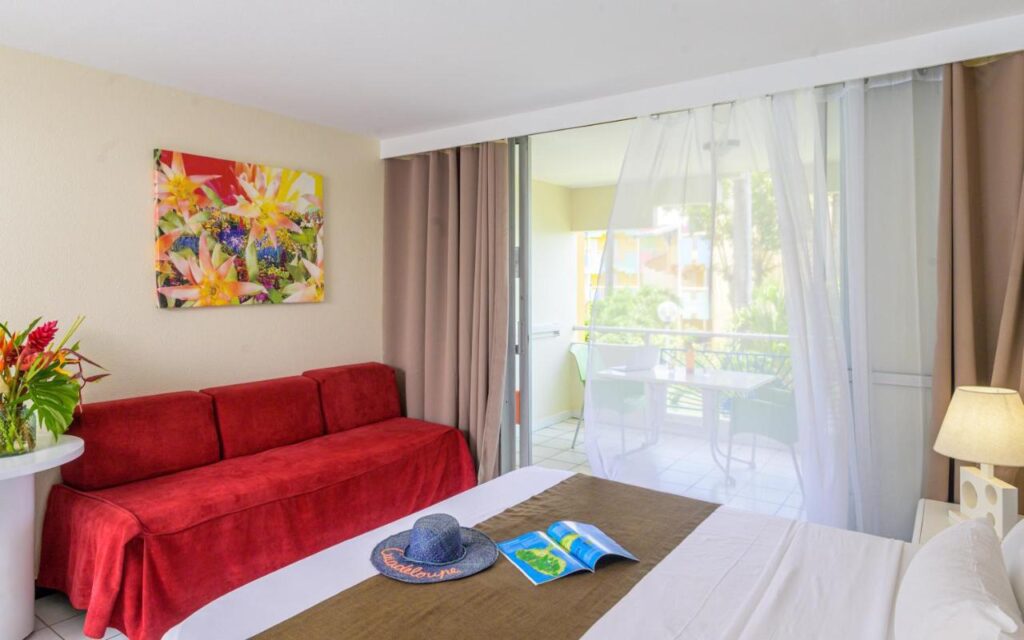
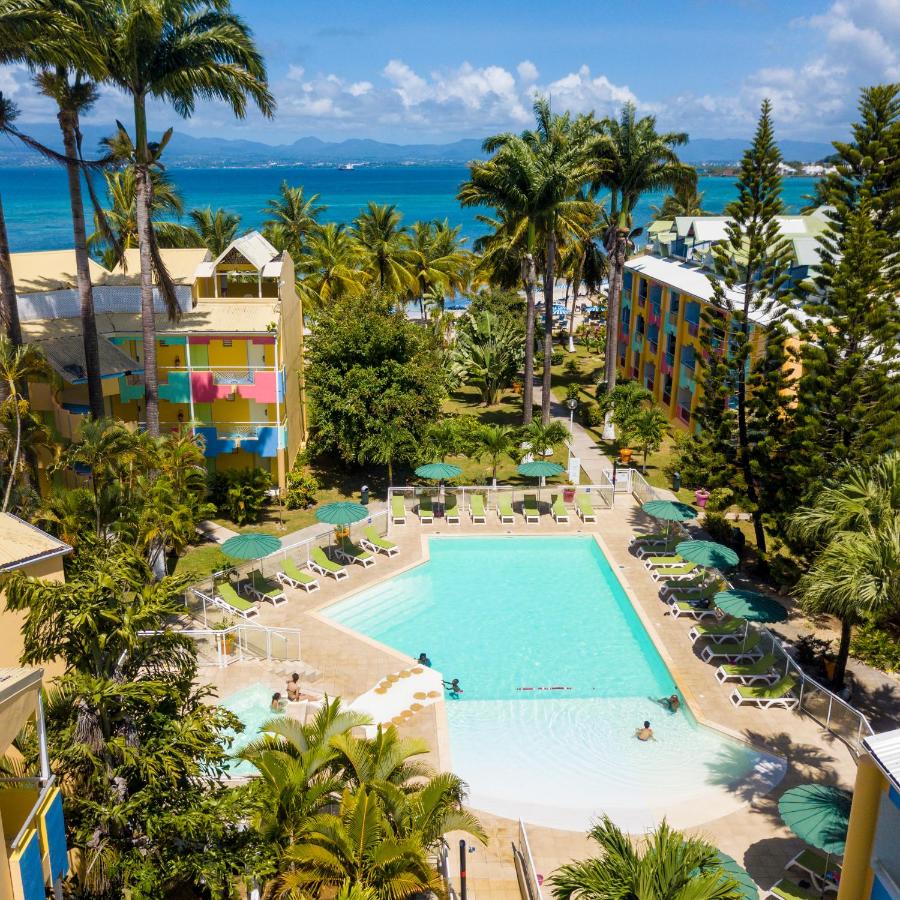
Karaibes Hotel: Karaibes Hotel has an outdoor pool and 24-hour snack bar 100 m from the beach. 1 kilometer from Le Gosier town center. Breakfast and drinks are provided 24/7 at Hotel Karaibes. The Karaibe tour desk provides advice on island tours and activities. Central Point à Pitre is 7 kilometers from Bas du Fort Marina, 5 km distant. Etc.
Sainte-Anne
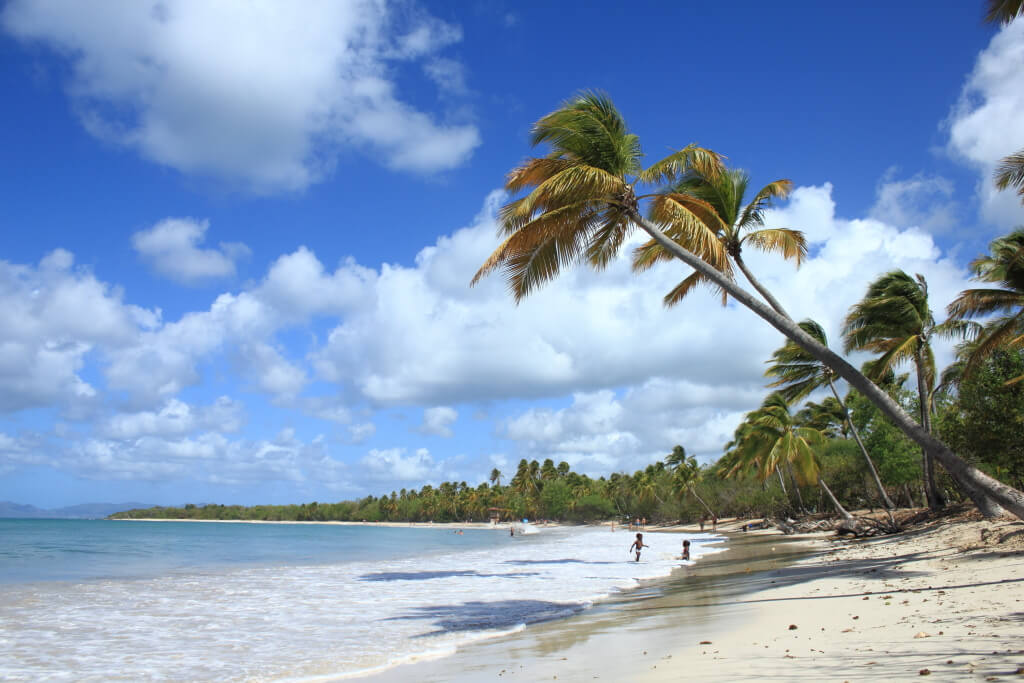
Sainte-Anne is between Gosier and Saint-Francois on the south coast of Grand-Terre. Its famous palm-lined beaches and clear blue waters make it a place that looks like it belongs on a postcard. There, you can spend lazy days soaking up the Caribbean sun on the beautiful “Caravelle” beach or one of the popular beaches in the town center. Or, you can take advantage of the local sailing and surfing schools, have fun at the local parks, go to the local handicraft village and market, and eat delicious island food. Here are hotel recommendations in Sainte-Anne :
- Hotel Le Rotabas: This hotel, surrounded by a tropical garden, has easy access to La Caravelle Beach and an outdoor pool. There is a cafeteria, a restaurant, and a terrace at Hotel Le Rotabas. The Pointe-à-Pitre International Airport is 20 minutes away by car from Le Rotabas, which also provides transportation at an additional cost. Additionally, a ferry terminal is 600 meters away. Breakfast, lunch, and dinner are all served as buffets in the restaurant. The Hotel Le Rotabas offers a tour desk and car rentals.
- Le NIL: Le NIL provides accommodations with a common lounge, free private parking, a terrace, and a restaurant in Sainte-Anne, only steps from Sainte Anne Beach. The hotel has a bar and private beach area, located 1.9 km from La Caravelle Beach and 2.8 km from Bois Jolan Beach. The lodging offers both free WiFi and karaoke.
Le Moule
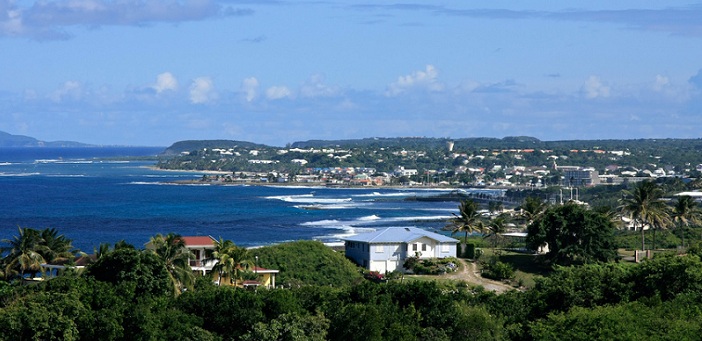
Le Moule on Grande-eastern Terre’s shore is most likely the best place to stay if you enjoy learning about the local history and culture.
This Atlantic town was a thriving sugar port in the 17th and 18th centuries, and sugarcane farms remain plentiful. You might anticipate touring nearby distilleries, finding a magnificent colonial home, and exploring the island’s Pre-Columbian archaeological site and museum. Hotels in Le Moule:
Shambala Lodge: Shambala Lodge is a lodging option in Le Moule that is 1.2 kilometers from Plage de la Porte d’Enfer and 3 kilometers from Dauphins Beach. It provides free WiFi, air conditioning, a terrace, and a bar. There is a private bathroom with a hairdryer and a shower.
A Full English/Irish breakfast is served each morning at the vacation rental. In addition to relaxing in the garden and swimming in the outdoor pool, visitors can enjoy trekking or windsurfing.
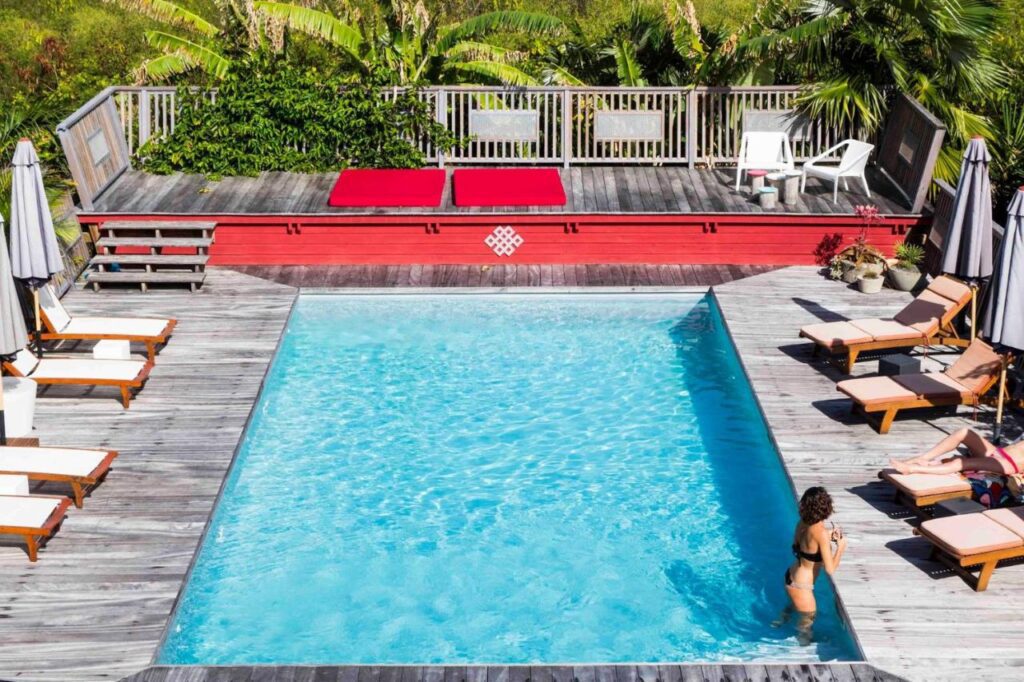
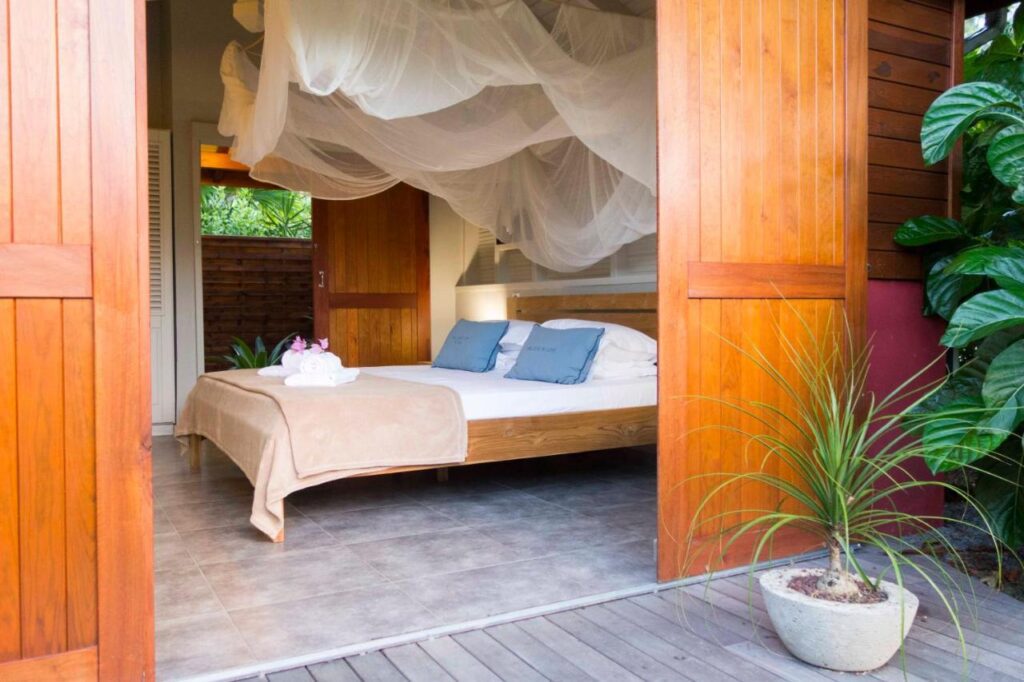
Résidence Tropicale: Résidence Tropicale is a short distance from Autre bord Beach and features a garden, air-conditioned lodging with a balcony, and free WiFi. A private bathroom with shower, complimentary toiletries, and a hairdryer are included in each unit, which also includes a terrace with sea views, a flat-screen TV, a dining area, and a well-equipped kitchen. A kettle, microwave, fridge, and burner are also available. The distance to Dauphins Beach from the hotel is 1.1 kilometers. Pointe-à-Pitre Le Raizet Airport, located 27 kilometers from Résidence Tropicale, is the closest airport.
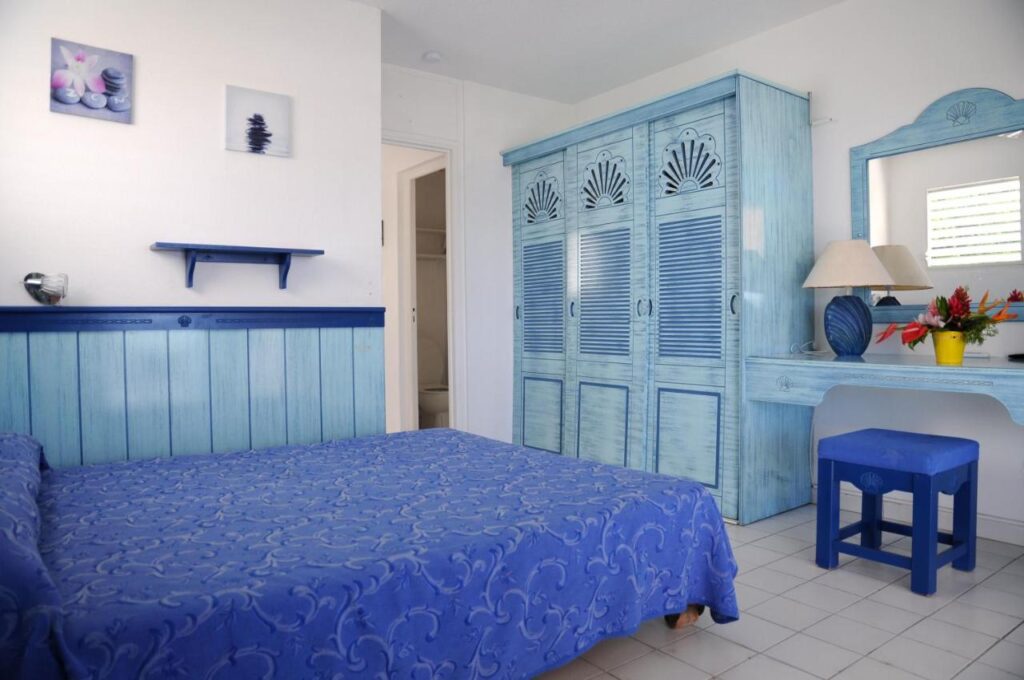
Deshaies
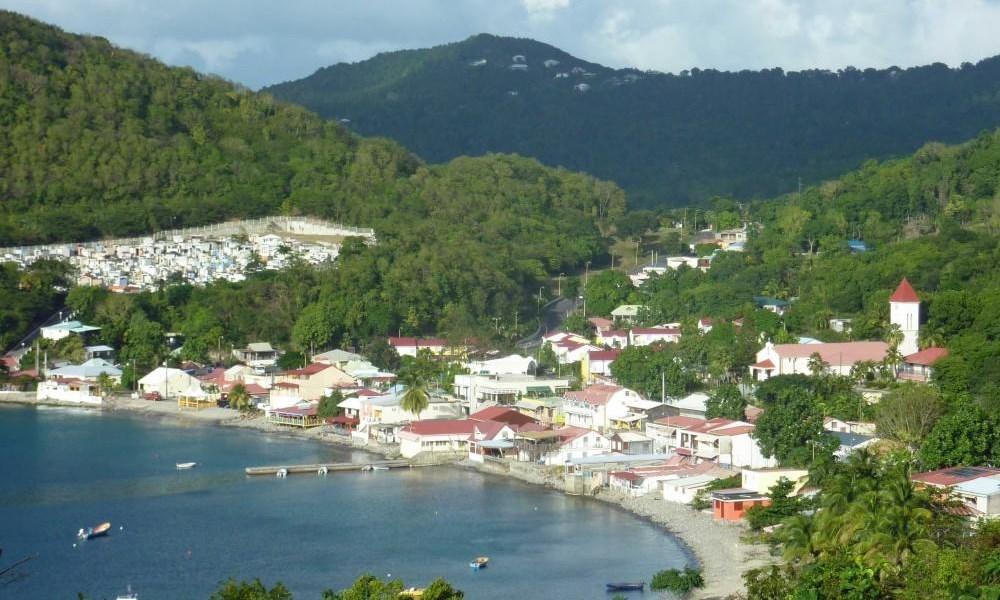
Deshaies’ sunsets are the island’s most Instagrammed! On volcanic Basse-northwest, Terre’s shore is a tranquil town. With a hillside backdrop of verdant foliage, a French-Creole feels, and some of the island’s most gorgeous beaches, this charming locale is perfect for couples and active families. Here are a few out-of-hotels in Deshaies:
Le Rayon Vert: On Guadaloupe, Le Rayon Vert Hotel has a hot tub, outdoor pool, and sun terraces. The rustic-style rooms offer flat-screen cable TVs, minibars, and private terraces with Caribbean Sea views. This hotel has a private bathroom with a shower, complimentary toiletries, and a hairdryer. Fresh fruit and vegetables are served at the restaurant. The accommodation fee includes breakfast. Le Rayon Vert features disabled-accessible facilities, a library, and a smoking area.
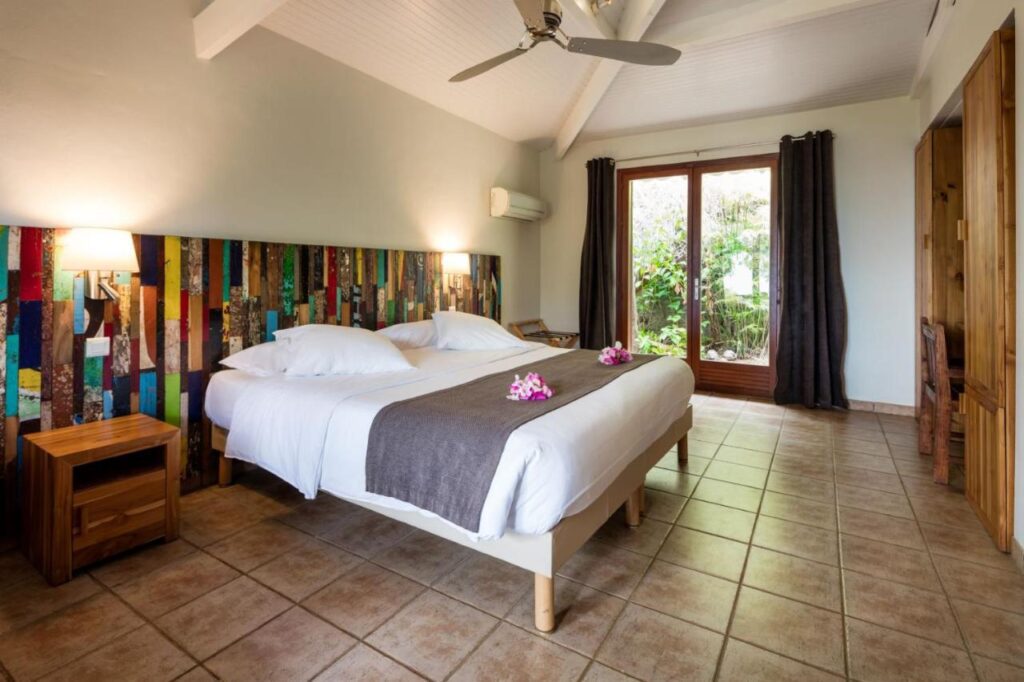
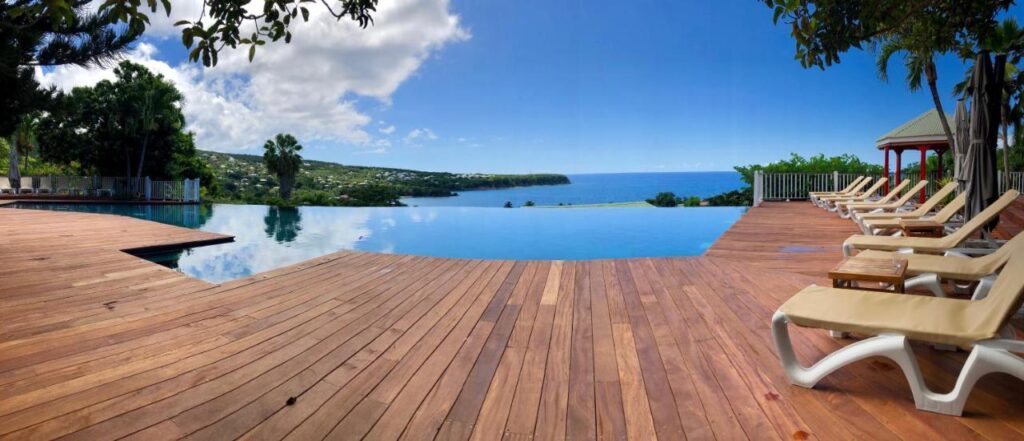
Carre Royal: Carre Royal provides Deshaies accommodations with complimentary WiFi. Water activities and the beach are 300 m distant. Relax in certain rooms’ seating areas. Certain accommodations overlook the sea, pool, or garden. Showers are in rooms. Coffee and tea at the pool lounge. Le Gosier is 34 kilometers from Carre Royal, while Sainte-Anne is 43 km. Carre Royal is 27 miles from Guadeloupe-Pôle Caraïbes Airport. For a two-person trip, couples rated the location 9.5.
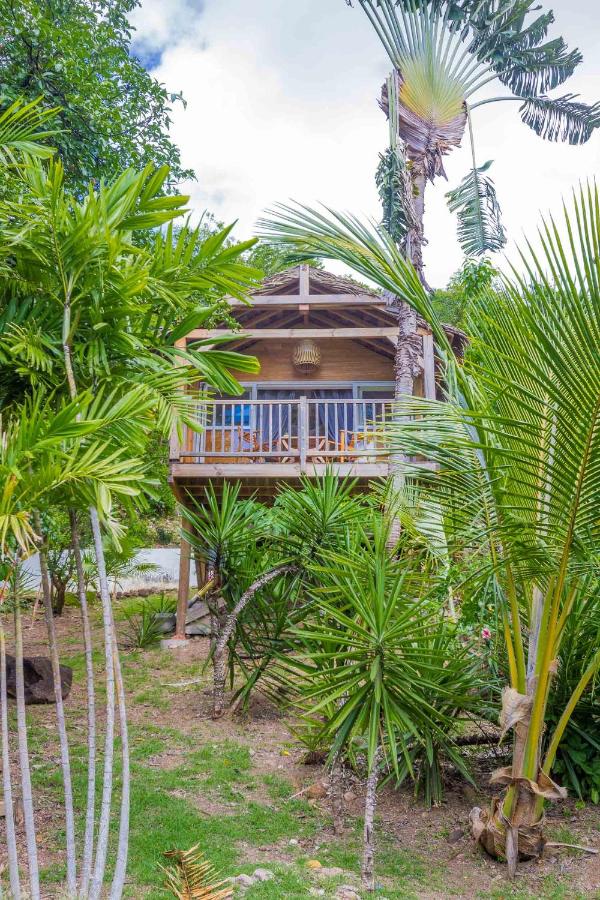
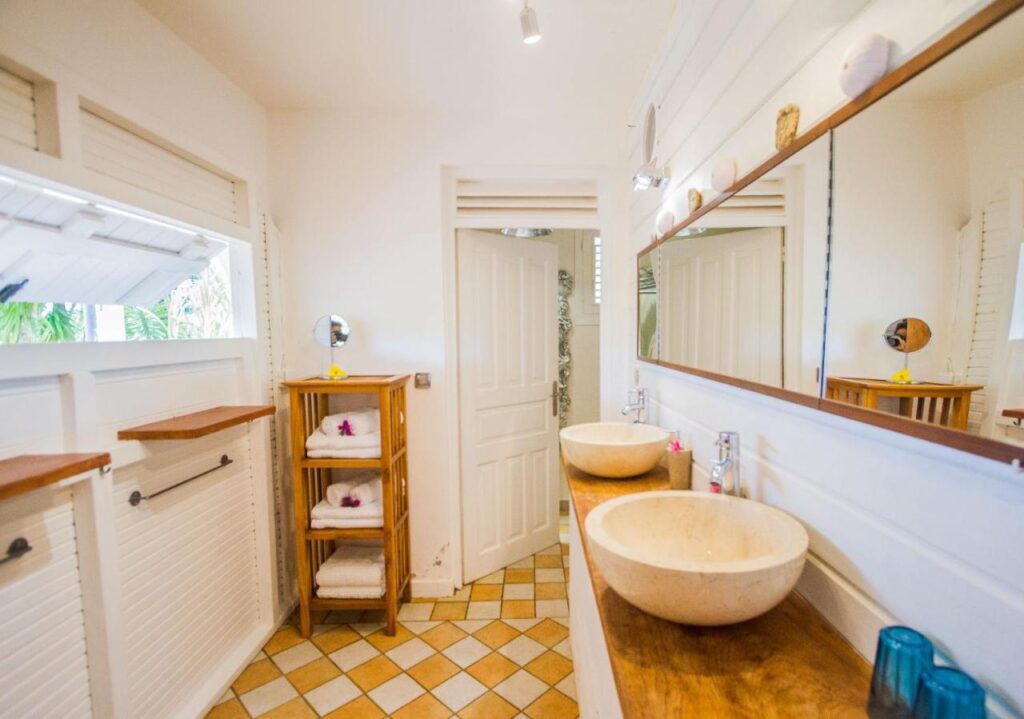
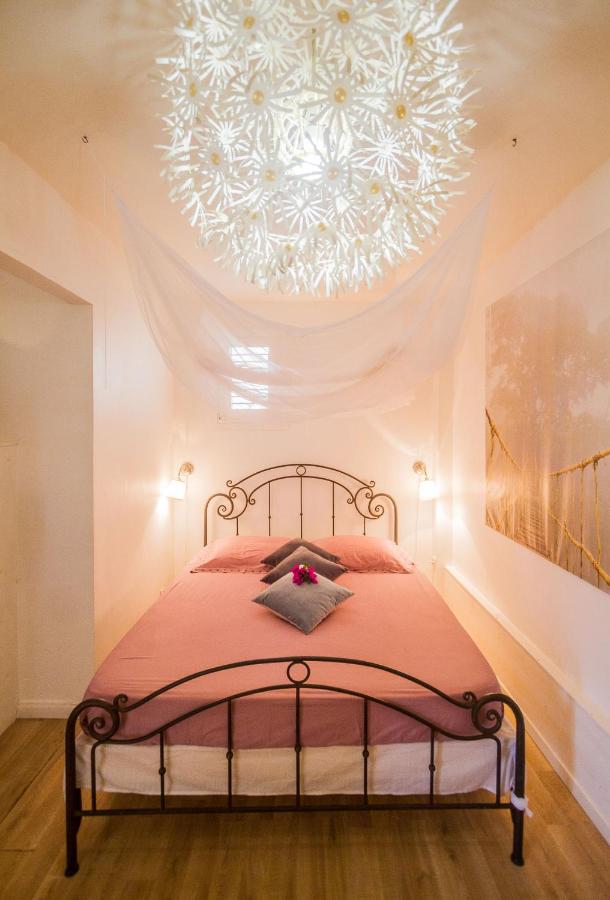
Popular Attractions and Activities in Guadeloupe
Guadeloupe, with its diverse landscape and rich cultural heritage, offers a myriad of attractions and activities for visitors to enjoy. Here are some of the most popular ones:
Les Saintes Islands: This picturesque archipelago off the coast of Guadeloupe consists of eight small islands, with Terre-de-Haut and Terre-de-Bas being the main ones. Visitors can explore the charming villages, relax on pristine beaches, and hike up to breathtaking viewpoints for panoramic views of the surrounding Caribbean Sea.
La Soufrière Volcano: As the highest peak in the Lesser Antilles, La Soufrière is a must-visit for adventure enthusiasts and nature lovers. Hiking to the summit offers stunning vistas of the island and the chance to witness the volcano’s sulfurous vents and crater.
Jardin Botanique de Deshaies: Located on the northwest coast of Basse-Terre, this botanical garden is a haven of lush vegetation and exotic flora. Visitors can stroll along well-manicured paths, admire tropical flowers and plants, and even spot colorful birds and butterflies.
Plage de Grande-Anse: This beautiful beach on the island of Basse-Terre is renowned for its golden sands and crystal-clear waters. It’s an ideal spot for swimming, sunbathing, and water sports such as snorkeling and surfing.
Cascade aux Ecrevisses: Nestled in the heart of Basse-Terre’s rainforest, this stunning waterfall is a popular attraction for nature lovers. Visitors can take a refreshing dip in the natural pool at the base of the falls or simply admire the cascading waters from the viewing platform.
Pointe des Châteaux: Located on the eastern tip of Grande-Terre, this dramatic headland offers sweeping views of the Atlantic Ocean and the surrounding coastline. It’s a great spot for a scenic drive, leisurely hike, or picnicking while taking in the rugged beauty of the landscape.
Musée Schoelcher: Situated in Pointe-à-Pitre, this museum is dedicated to the life and work of Victor Schoelcher, a French abolitionist who played a key role in the abolition of slavery in the French colonies. The museum houses a fascinating collection of artifacts, documents, and exhibits related to slavery and the history of Guadeloupe.
Local Markets: Guadeloupe’s vibrant markets offer a glimpse into the island’s culture and culinary traditions. Visitors can browse stalls selling fresh produce, spices, crafts, and souvenirs, and sample local delicacies such as bokit sandwiches, accras (cod fritters), and ti’punch cocktails.
🗺 Explore great tours on Viator or Get Your Guide!
Getting Around Guadeloupe
Navigating transportation in Guadeloupe will make or break your experience in the island. It’s important to know before going how to get around to access the diverse attractions and stunning landscapes. Here’s a guide to getting around the island efficiently:
Rental Cars: Renting a car is one of the most popular and convenient ways to explore Guadeloupe. Several rental agencies operate at both airports and major towns. It offers flexibility and independence, allowing you to explore at your own pace. Ensure you have a valid driver’s license and familiarize yourself with local driving rules, as roads can be narrow and winding in some areas.
Public Buses: Guadeloupe’s public bus system, operated by the company called Karu’lis, provides an affordable way to travel between towns and villages. Buses are generally reliable and punctual, though service frequency may vary depending on the route and time of day. It’s advisable to check schedules in advance and plan your journeys accordingly. Keep in mind that buses may not reach all tourist destinations, so you might need to combine bus travel with other modes of transportation.
Taxis: Taxis are readily available in Guadeloupe and can be found at airports, ferry terminals, and major towns. They provide a convenient option for short trips or traveling to destinations not served by public transportation. However, fares can be relatively expensive compared to other options, so it’s a good idea to negotiate the price with the driver before starting your journey. Taxis are also a popular choice for airport transfers and guided tours of the island.
Ferries: Ferries operate between the main islands of Guadeloupe, such as Basse-Terre and Grande-Terre, as well as neighboring islands like Les Saintes, Marie-Galante, and La Désirade. They offer a scenic and enjoyable way to explore the region, with regular departures from designated ports. Ferry schedules can vary depending on the season, so it’s recommended to check timetables in advance and book tickets if possible, especially during peak travel periods.
Walking and Cycling: In towns and tourist areas, walking and cycling are viable options for getting around, particularly for short distances. Many towns have pedestrian-friendly streets and dedicated bike paths, allowing you to explore at a leisurely pace while soaking in the local atmosphere. Renting a bicycle is also an eco-friendly and healthy way to explore the island’s scenic coastal roads and countryside.
Guided Tours: For those who prefer a guided experience, organized tours and excursions are available, covering popular attractions and activities across Guadeloupe. Whether you’re interested in hiking, snorkeling, or cultural sightseeing, there are tour operators that offer comprehensive packages with transportation included.
🚙 Looking to get around Guadeloupe via car? Find the cheapest car rentals here!
Hitchkhiking in Guadeloupe
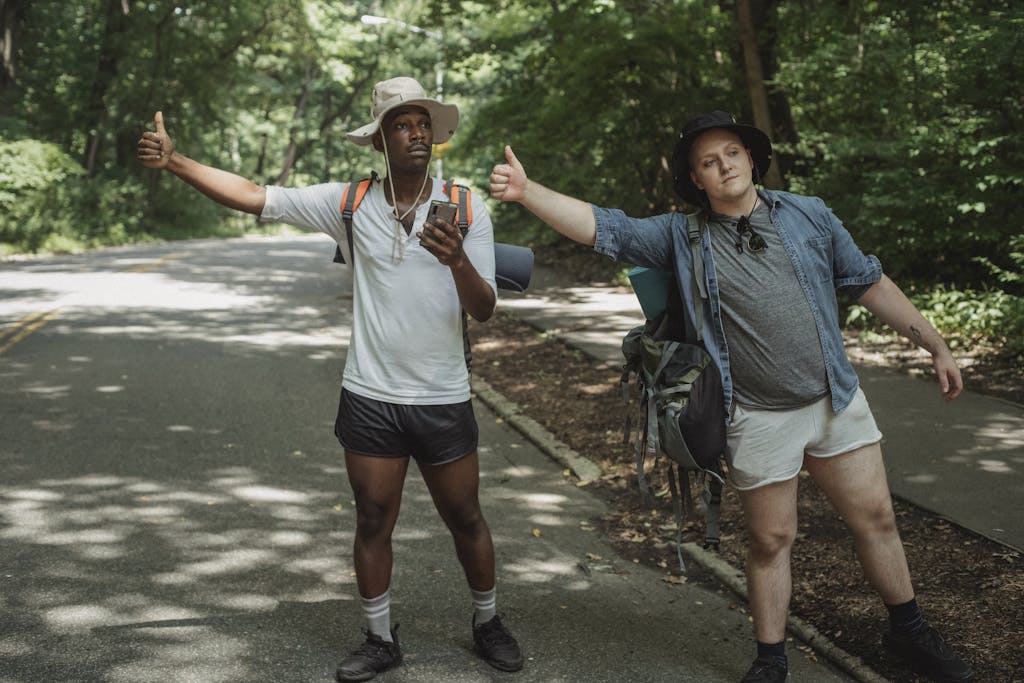
While visiting Guadeloupe, I met travelers that hitchhiked. Let me first say, I didn’t – I don’t believe that I’m that daring. But many, do it and it lead me to beileve it possible.
Hitchhiking can be a viable option for adventurous travelers looking to explore Guadeloupe on a budget and connect with locals. While it may not be as common or predictable as other modes of transportation, hitchhiking can offer unique experiences and opportunities to interact with the island’s residents. Here are some tips for hitchhiking in Guadeloupe:
Safety First: As with hitchhiking anywhere, prioritize your safety. Choose well-lit and populated areas to hitchhike from, and trust your instincts when accepting rides. It’s advisable to hitchhike in pairs or groups whenever possible.
Thumb Technique: When hitchhiking, stand in a visible and safe location along the roadside with your thumb extended to signal that you’re seeking a ride. Choose spots where drivers can easily pull over, such as near intersections or gas stations.
Local Customs: Familiarize yourself with local customs and etiquette regarding hitchhiking in Guadeloupe. While it may not be as common as in some other countries, many locals are accustomed to picking up hitchhikers, especially in rural areas where public transportation is less frequent.
Be Patient and Flexible: Hitchhiking in Guadeloupe may require patience, as wait times can vary depending on factors such as location, time of day, and local events. Be prepared to wait for a ride and remain flexible with your travel plans.
Communicate Clearly: When accepting a ride, communicate clearly with the driver about your destination and any stops or detours you may need to make along the way. Use basic French phrases if possible, as English may not be widely spoken in some areas.
Offer Gratitude: Show appreciation to drivers who offer you a ride by offering a friendly smile, engaging in conversation, and expressing gratitude for their assistance. A small token of appreciation, such as a thank-you note or gesture of goodwill, can go a long way in fostering positive interactions.
Use Common Sense: Exercise caution and common sense while hitchhiking in Guadeloupe. Trust your instincts and avoid accepting rides from individuals who make you feel uncomfortable or uneasy.
Guadeloupe Travel Tips and Insights
Respect Local Customs: Guadeloupe has a rich cultural heritage influenced by African, French, and Caribbean traditions. Respect for elders and politeness are highly valued. When interacting with locals, greet them with a friendly “bonjour” (hello) or “bonsoir” (good evening), and use “s’il vous plaît” (please) and “merci” (thank you) liberally. Avoid discussing sensitive topics such as politics or religion unless invited to do so.
Embrace Island Time: This was one of the things I quickly relized and appericated – life in Guadeloupe operates on a relaxed schedule, known locally as “l’heure guadeloupéenne” (Guadeloupean time). Expect a slower pace of life, especially in rural areas and small villages. Patience and flexibility are key, whether you’re waiting for a meal at a restaurant or catching public transportation.
Sample Local Cuisine: Guadeloupe boasts a vibrant culinary scene, blending French, African, and Creole flavors. Don’t miss the opportunity to try traditional dishes such as accras (cod fritters), bokit sandwiches, colombo (spicy stew), and fresh seafood. Visit local markets to taste exotic fruits like guava, passion fruit, and soursop.
Stay Hydrated and Protect Yourself from the Sun: Guadeloupe’s tropical climate means high temperatures and humidity year-round. Stay hydrated by drinking plenty of water, especially if you’re engaging in outdoor activities. Wear sunscreen, a hat, and lightweight clothing to protect yourself from the sun’s rays.
Explore Off the Beaten Path: While Guadeloupe has its share of popular tourist attractions, some of the island’s best experiences can be found off the beaten path. Venture into the countryside to discover hidden waterfalls, secluded beaches, and charming villages. Renting a car or hiring a local guide can help you explore these lesser-known gems.
Learn Basic French Phrases: While many Guadeloupeans speak English, particularly in tourist areas, knowing some basic French phrases can enhance your interactions and show respect for the local language. Practice simple greetings, expressions, and numbers to facilitate communication.
Respect the Environment: Guadeloupe’s natural beauty is one of its greatest assets, so it’s essential to protect the environment during your visit. Follow designated trails when hiking, dispose of waste properly, and avoid disturbing wildlife. Opt for eco-friendly activities such as snorkeling, kayaking, or birdwatching to minimize your impact on the ecosystem.
Experience Local Festivals and Events: Apparently my visit to the island was during one of the carnival, unknowingly. Guadeloupeans love to celebrate their cultural heritage through festivals, music, and dance. Keep an eye out for events such as the Carnival celebrations, Gwoka music festivals, and seafood festivals, which offer a glimpse into the island’s vibrant traditions.
Currency: The official currency of Guadeloupe is the Euro (EUR). As a French overseas territory, Guadeloupe uses the same currency as mainland France. It’s advisable to exchange currency before arriving on the island or withdraw Euros from ATMs upon arrival. Major credit cards are widely accepted at hotels, restaurants, and larger establishments, but it’s a good idea to carry some cash for smaller purchases and when visiting rural areas.
Electric Power Adapter: Guadeloupe, like France, operates on a 230V supply voltage and 50Hz frequency. The plug types commonly used are Type C and Type E. Type C plugs have two round pins, while Type E plugs have two round pins with a hole for the socket’s male earthing pin. If your devices have a different plug type, you’ll need a power adapter. It’s advisable to bring a universal adapter to ensure compatibility with different outlets.
⛑ Find out how much it costs to protect your trip today with Safety Wing travel insurance.
FAQs: Travelers Planning A Trip to Guadeloupe Island
When is the best time to visit Guadeloupe Island?
The best time to visit Guadeloupe Island is during the dry season, which typically runs from December to May. This period offers sunny weather with lower chances of rainfall, making it ideal for outdoor activities and beach relaxation.
Do I need a visa to travel to Guadeloupe Island?
Travelers from many countries, including the United States, Canada, and European Union nations, typically do not need a visa for short stays in Guadeloupe. However, it’s essential to check the specific visa requirements based on your nationality before traveling.
What are the most popular beaches in Guadeloupe?
Some of the most popular beaches in Guadeloupe include Grande-Anse Beach, Plage de la Caravelle, and Plage de la Datcha. Each offers its own unique charm, from pristine white sands to vibrant coral reefs for snorkeling.
Is it safe to travel to Guadeloupe Island?
Guadeloupe is generally considered a safe destination for travelers. Like any place, it’s essential to take common-sense precautions such as avoiding isolated areas at night and safeguarding valuables.
What are the must-try dishes of Guadeloupe cuisine?
Some must-try dishes of Guadeloupe cuisine include bokit sandwiches, accras (cod fritters), colombo (spicy stew), and seafood dishes such as grilled lobster or Creole-style fish.
What are the must-try dishes of Guadeloupe cuisine?
Some must-try dishes of Guadeloupe cuisine include bokit sandwiches, accras (cod fritters), colombo (spicy stew), and seafood dishes such as grilled lobster or Creole-style fish.
Are there any hiking trails in Guadeloupe?
Yes, Guadeloupe offers numerous hiking trails for outdoor enthusiasts. One popular trail is the ascent of La Soufrière Volcano on Basse-Terre, offering breathtaking views from the summit. Other trails explore rainforests, waterfalls, and coastal cliffs.
How do I travel between the islands of Guadeloupe?
Travel between the islands of Guadeloupe is primarily done by ferry. Regular ferry services connect the main islands of Basse-Terre and Grande-Terre, as well as the smaller islands of Les Saintes, Marie-Galante, and La Désirade.
What are some cultural festivals or events happening during my visit?
Guadeloupe hosts several cultural festivals and events throughout the year, including the Carnival celebrations in February, Gwoka music festivals, and various seafood festivals showcasing the island’s culinary traditions.
What are the best spots for snorkeling or scuba diving in Guadeloupe?
Some of the best spots for snorkeling and scuba diving in Guadeloupe include the Jacques Cousteau Underwater Reserve off the coast of Basse-Terre, Pigeon Island, and the coral reefs around Les Saintes and Marie-Galante.
Are there any eco-friendly accommodations or activities available on the island?
Yes, Guadeloupe offers a range of eco-friendly accommodations, including eco-lodges and sustainable resorts that prioritize environmental conservation. Additionally, visitors can engage in eco-friendly activities such as hiking, birdwatching, and exploring the island’s protected natural areas.
Leave a Reply
© copyright 2024 Congologie Studios